Table of Contents
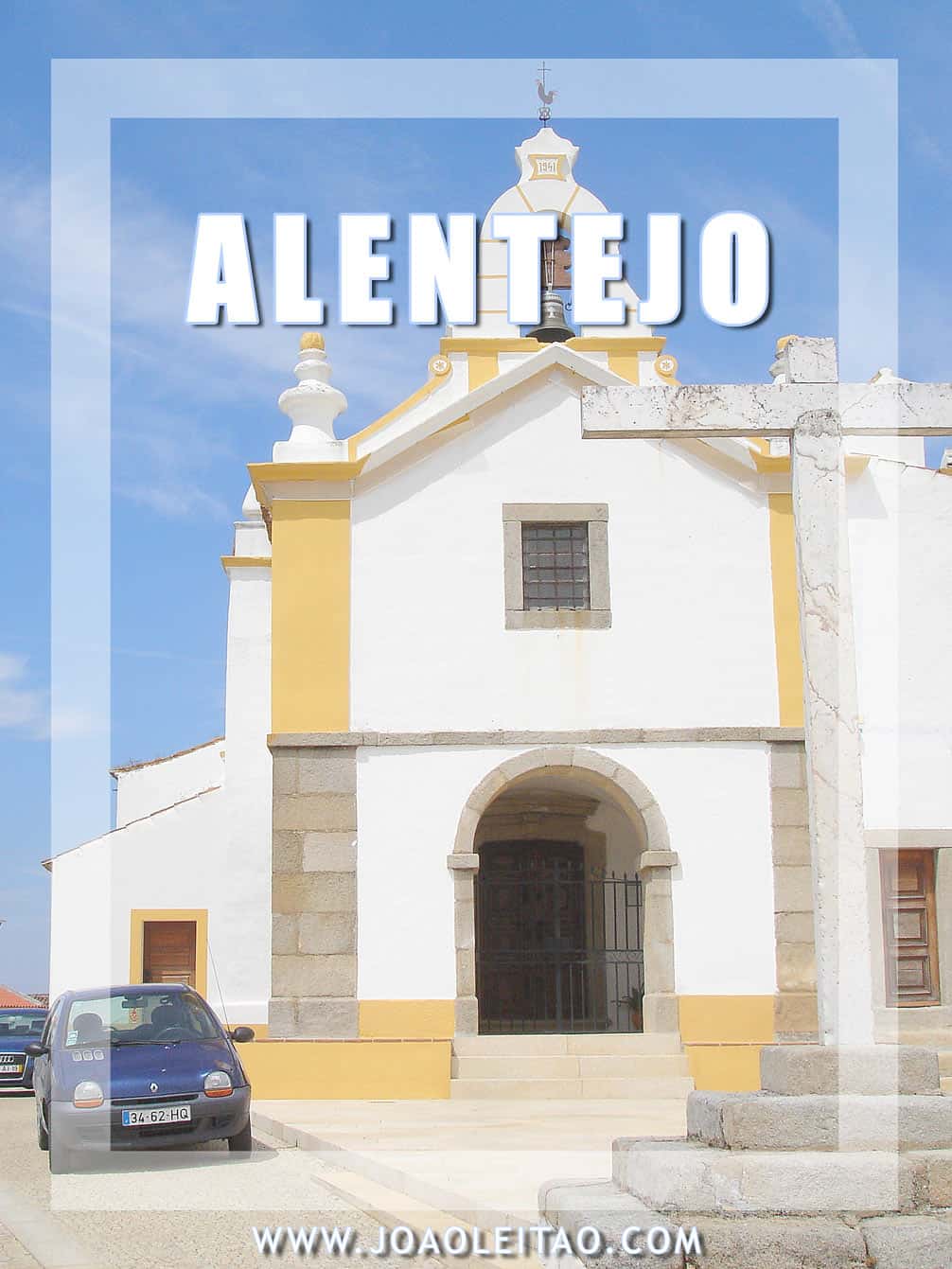
The district of Évora is a fascinating region in Portugal, within easy reach, but keeping a rare personality of its own.
The district’s capital city, Évora, is classified as a UNESCO World Heritage Site and so is the fortified city of Elvas.
To visit Alentejo is indeed one of the most interesting travel alternatives while in the country. In fact, many of the best places to visit in Portugal are located in this beautiful region.
In addition to a mandatory visit to Évora, there are other places in the district known for their tourist attractions that you also must see including Monsaraz, Estremoz, Évoramonte, or Montemor-o-Novo.
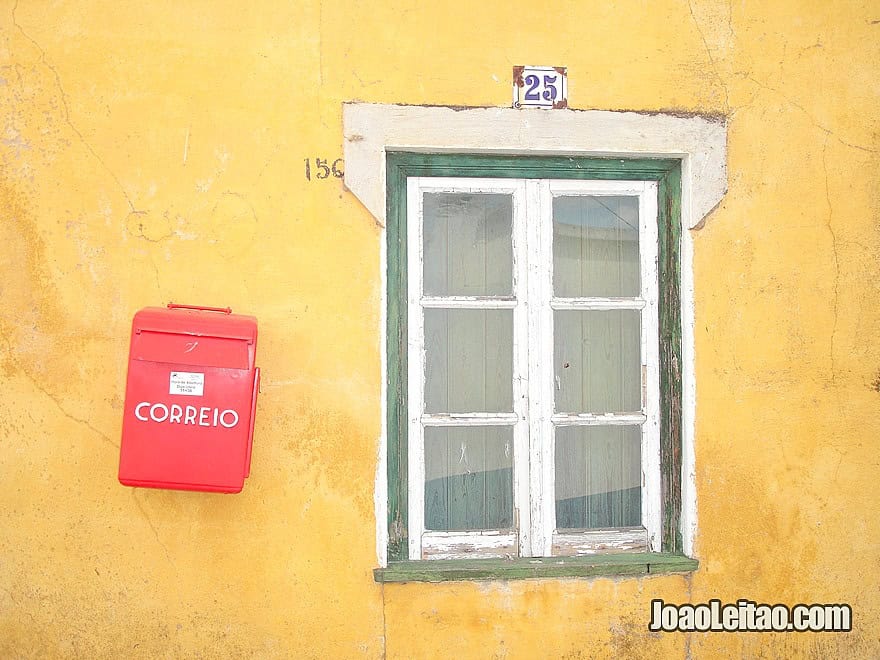
But beyond that, there are many hidden wonderful corners that maintain a unique character that’s hard to find elsewhere in the country. Those are mainly small villages, with streets flanked by picturesque whitewashed houses with bright colored baseboards, unique churches to this part of the country, washers, fountains, and forts.
The one thing all these small Alentejo villages and towns have in common is the Portuguese Suave architecture that you see in elementary schools, public washers, and small local government buildings.
The Alentejan plain overpowers the landscape with fields of golden wheat, dams and reservoirs, and olive groves. Unfortunately, people continue to move out of Alentejo and that’s noticeable in practically lifeless towns, uninhabited houses, and closed elementary schools.
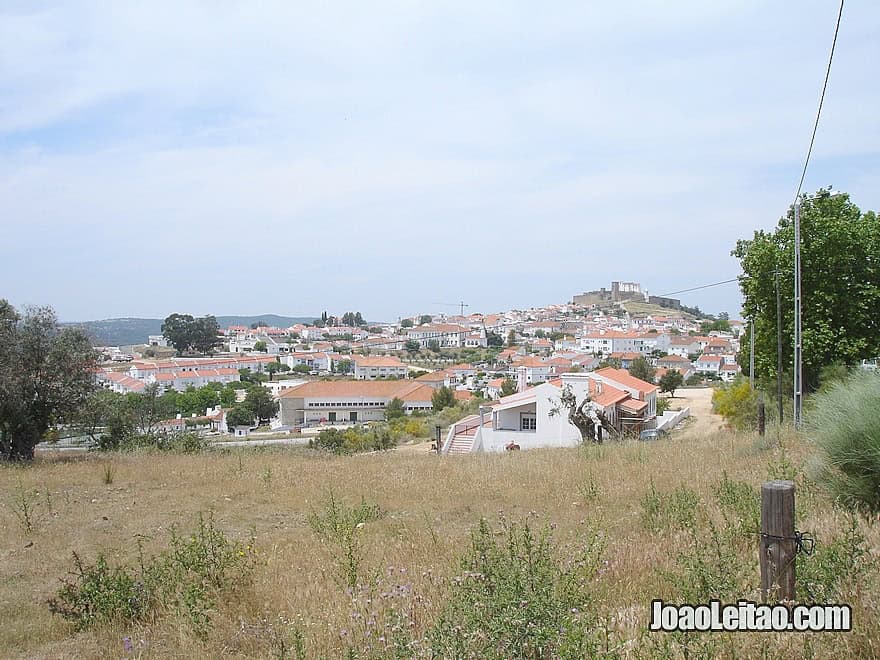
This is the place in the country with the highest concentration of pre-historical traces due to the proximity of rivers Tagus, Sado, and Guadiana that made the region appealing and a must-stop point for many routes over time.
Also read the page: What to do in Alentejo.
Alentejo is a gorgeous area with many unknown or forgotten places. To visit Alentejo is to enjoy the simplicity of the land and the people turn this part of Portugal into a place waiting to be discovered.
When I studied in Évora, I traveled a lot in this region.
I’m listing 22 unknown places in the district of Evora Alentejo that you probably didn’t know existed. I apologize in advance for the poor quality of the photos, but I took them over 17 years ago with a first-generation digital camera.
These are the places I’ll be mentioning on this page: Viana do Alentejo, Vale do Pereiro, Terena, São Pedro, São Matias, São Brissos, São Bartolomeu do Outeiro, São Sebastião da Giesteira, Santa Sofia, Santa Justa, Portel, Mitra, Graça do Divor, Escoural, Cromeleques dos Almendres (Almendres’ Megalithic Monument), Boa Fé, Alqueva, Arraiolos, Anta do Zambujeiro, Alcáçovas, and Azaruja.
Let’s discover Alentejo and its district of Évora.
Visit Alentejo Portugal
1. Azaruja
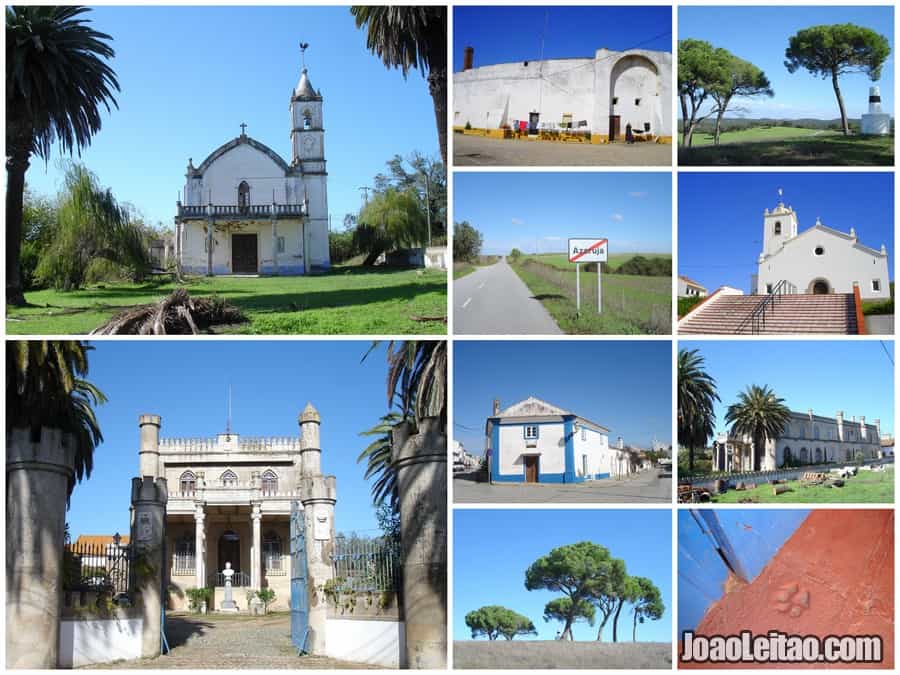
The village of Azaruja is named after the nearby brook Razucha. It was once called Vila Nova do Príncipe (the Prince’s New Town in English), but the Republican regime implemented in 1910 was against the name and gave the village its old name back.
Today, it’s one of the most populated and industrialized villages in the district of Évora because of the cork processing factories in the area, established by English and Catalan investors.
That created a unique community, rural and bourgeois at the same time, and it was normal to hear people speaking Portuguese, Catalan, and Castellan in the village streets.
There’s even a typical sausage in Azaruja called Botifarra that’s actually a variation of the same sausage you’ll find in Catalonia. When traveling to Azaruja don’t forget to visit the Igreja Paroquial (church), the Pelourinho (pillory), and the Palácio do Conde da Azarujinha (Palace of the Count of Azarujinha).
Other sites a bit further from the village but worth the visit too include the old train station, the archway of the gate to the farm Quinta de Santo António, and the 1757 church Ermida de Nossa Senhora do Monte do Carmo.
2. Alcáçovas
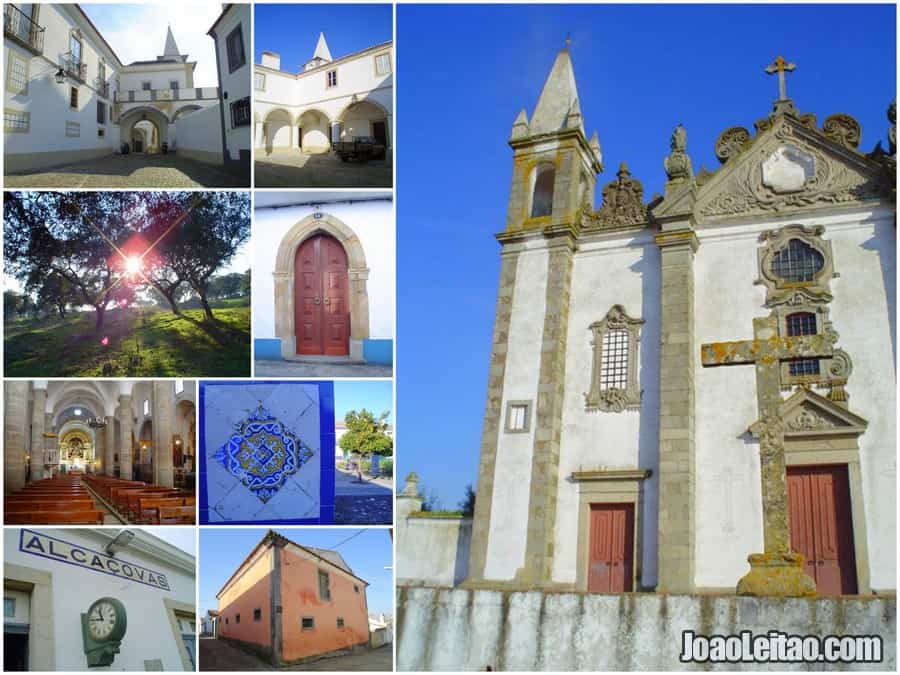
Alcáçovas became part of History as the location where the treaty with the same name was signed by the monarchies of Portugal and Castilla in 1479.
The Alcáçovas Treaty was one of the precursors of the even more famous Tordesillas Treaty (1494), which together with the Toledo Treaty (1480) intended to split the world in two.
Nowadays Alcáçovas is a pleasant town with plenty of historical heritage worth knowing, including the royal palace Paço dos Henriques, also known as Horto do Paço das Alcáçovas and Paço Real da Vila. It’s a Gothic-style palace with Mudéjar influences where princesses Isabel and Beatriz were married.
Both marriages were extremely important historically because they meant the strengthening of the relationship between Portugal and Spain. It’s also the palace where King João II wrote his will. Other must-sees include church Igreja Matriz, also known as Igreja do Salvador de Alcáçovas, and its yard, church Ermida de São Pedro, the Fonte dos Escudeiros (Fountain of the Squires), and the chapel Capela das Conchas.
Nearby, also look for the Fonte Concelho, a fountain that according to the old people has been providing fresh water for over 700 years, and the convent Nossa Senhora da Esperança (Our Lady of Hope), built in honor of the miracle maker in the 16th century.
3. Anta do Zambujeiro (Zambujeiro Dolmen)
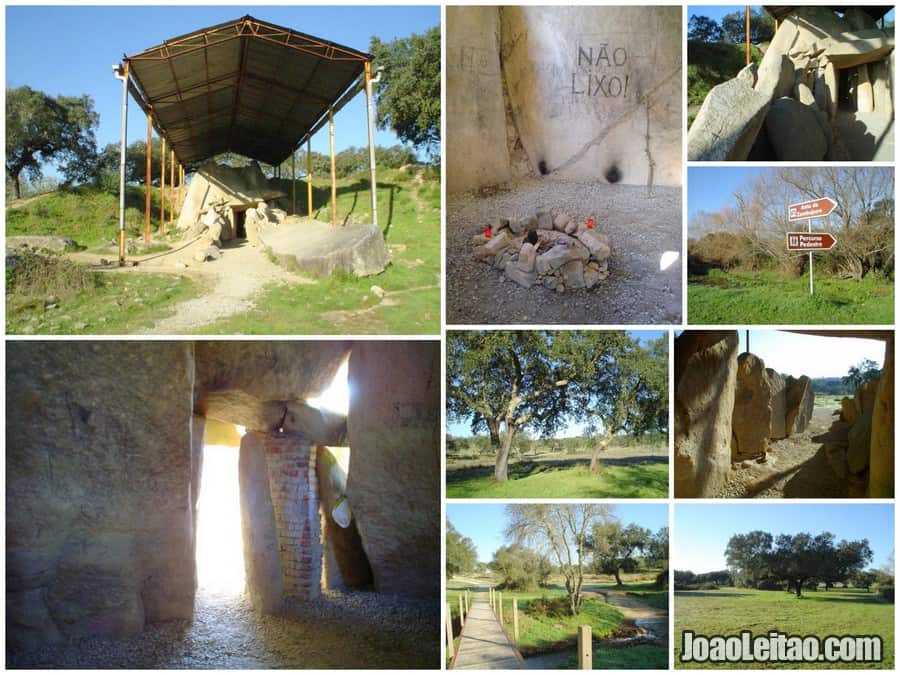
The district of Évora is rich in pre-historical human traces and the Anta do Zambujeiro (Zambujeiro Dolmen) is an excellent example of that. When you visit Alentejo, you should include this type of monuments on your list.
Anta do Zambujeiro is the largest in its category in the Iberian Peninsula and was once called the Neolithic Cathedral. It’s in the outskirts of Valverde and was built between 3500 and 4000 BC.
It was discovered, still sealed, in 1965. Inside, after walking a 12-meter long corridor, they also found the funeral chamber, which is the functional center of a monument of this kind. During the excavations, they also found several archaeological artifacts that are now part of Museu de Évora (Museum of Évora).
4. Arraiolos
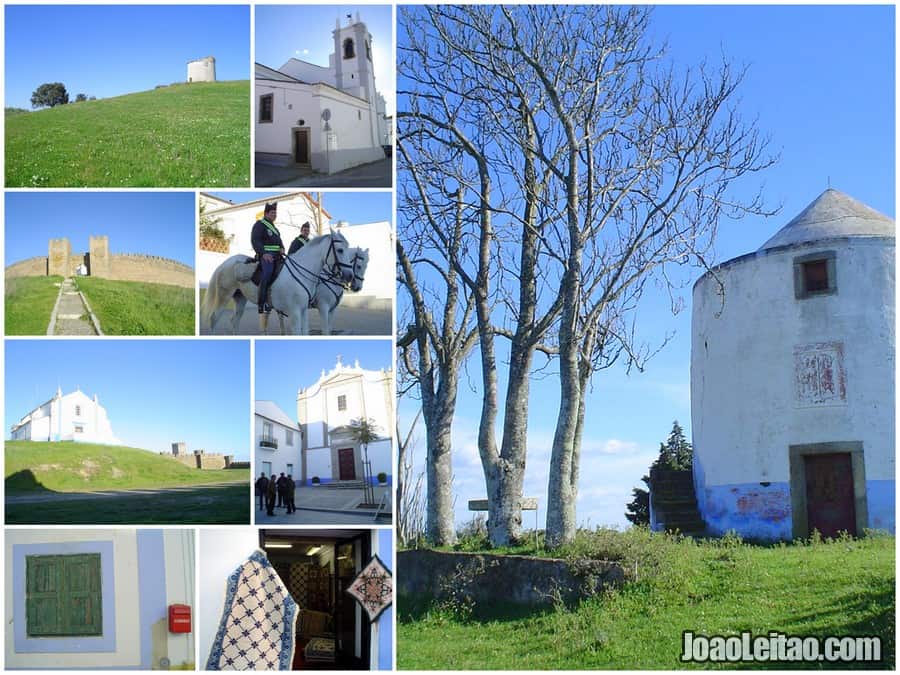
Arraiolos is a picturesque town a short distance from Évora, famous for its 1305 castle unusually round and for the Arraiolos tapestries. In addition to these two main attractions, it’s a lovely town to wander in typical Alentejo streets with the characteristic one-floor whitewashed houses or to rest at the public garden with a beautiful bandstand.
But there is much more to see in Arraiolos including the Centro Interpretativo do Tapete de Arraiolos (Interpretative Center of the Arraiolos Tapestry) based in Praça do Município square but with four different museum centers; the Aldeia da Terra, a replica of a village that stretches for over 3,000 square meters and created by artisan Tiago Cabeça; the Convento dos Lóios, a 16th century convent transformed into an inn with a church richly decorated with tiles.
Other must-sees include the churches Igreja Matriz de Arraiolos and Igreja da Misericórdia, the fountain Chafariz dos Almocrevers, the town’s pillory, and the palace Palácio da Sempre Noiva de Arraiolos. Finally, don’t leave Arraiolos without trying their famous pies.
5. Barragem do Alqueva (Alqueva Dam)
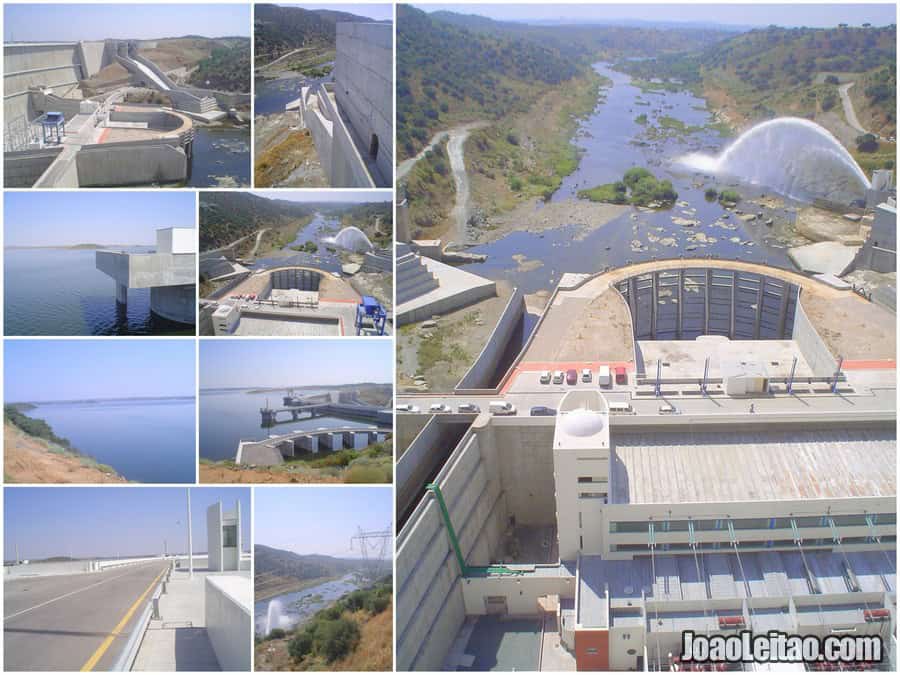
Building the Alqueva Dam was probably the most complex, most expensive, and slowest construction project in Portugal. Fifty years passed from the first studies to the final decision.
Eventually, construction began in 1998 and finished in 2002. The reservoir of about 250 km with a shore of around 1100 km became Europe’s largest artificial lake.
The landscape in the region was reshaped and the dam became the most prominent feature. Building this dam also meant submerging the village Aldeia da Luz completely. The population was rehoused in a village with a similar design built from scratch near the shore of the lake, where you can visit the interpretative center.
The reservoir is used for leisure with great spots for fishing, for outdoor activities, and for getting in touch with the local communities. Accesses were improved, marinas were built, and the region became more appealing as a tourism destination.
You obviously can’t skip a visit to the dam. To have an almost full perspective of the reservoir, you can go up to the historical village of Monsaraz and enjoy the view from the castle’s walls.
6. Boa Fé
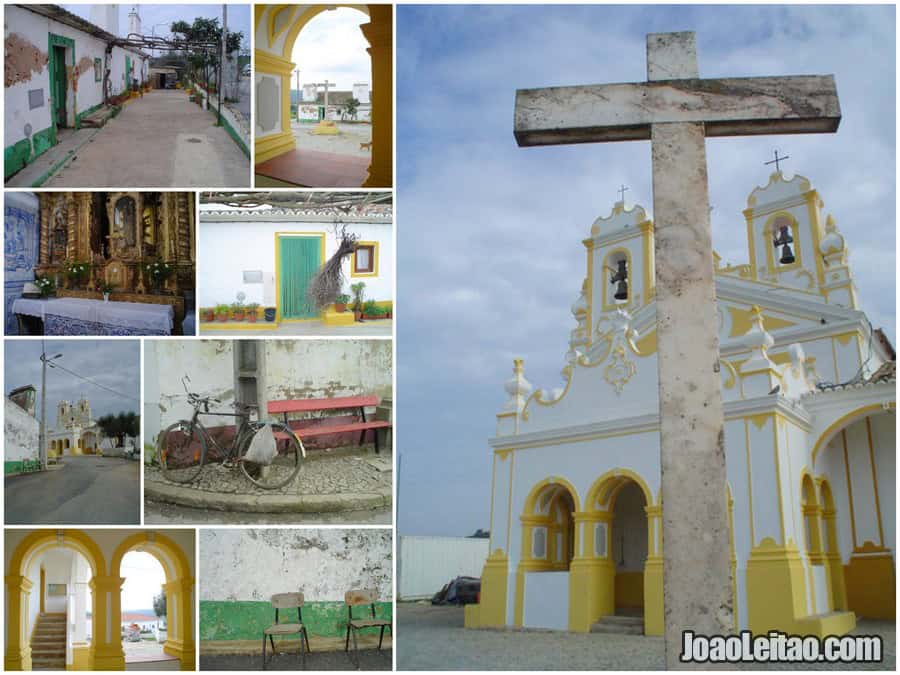
The village of Boa Fé was the headquarters of the parish of Nossa Senhora da Boa Fé until the 2013 reorganization. It’s west of Évora, between the megalithic complex of Almendres and the caves of Escoural.
It’s a tiny village with 322 people (according to the statistical data of 2011), where you don’t go through, but instead, you go to. When it comes to the historical heritage, the highlights include the village’s church and an old bridge known as Ponte do Lagar da Boa Fé across the São Brissos brook.
The bridge has three arches and is 27 meters long and was built in the 18th century to connect the road from Évora to Alcácer do Sal. A trip to the village is worth it for socializing with the locals, seeing the daily life of a small Alentejo community unfolding, and noticing the details in the houses and the streets.
7. Cromeleques dos Almendres
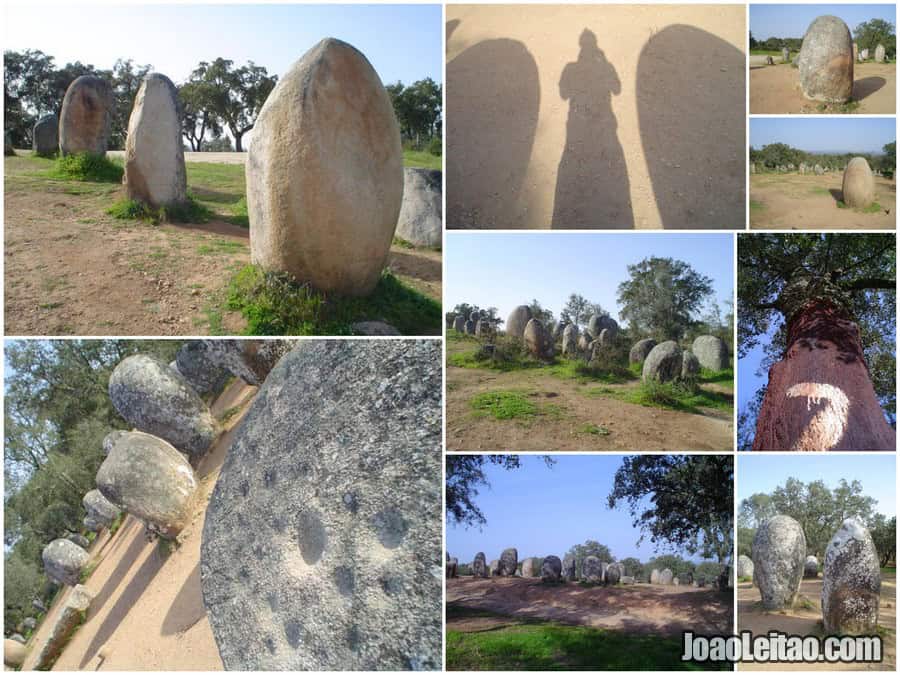
The megalithic complex Cromeleques dos Almendres is the largest structured group of menhirs in the Iberian Peninsula. The date when the complex was built is not precise, but it was probably between 6000- and 3000-years BC.
It’s a total of 95 monoliths, discovered in 1964 by researcher Henrique Leonor Pina. Ten of the blocks are decorated with bas reliefs or engravings. Although they are located in the private estate Herdade dos Almendres, the owner granted public access to the findings which can be visited for free. You can feel like you’re back in an ancient, mystical time of druids and strange rituals just by walking among the monoliths.
8. Escoural
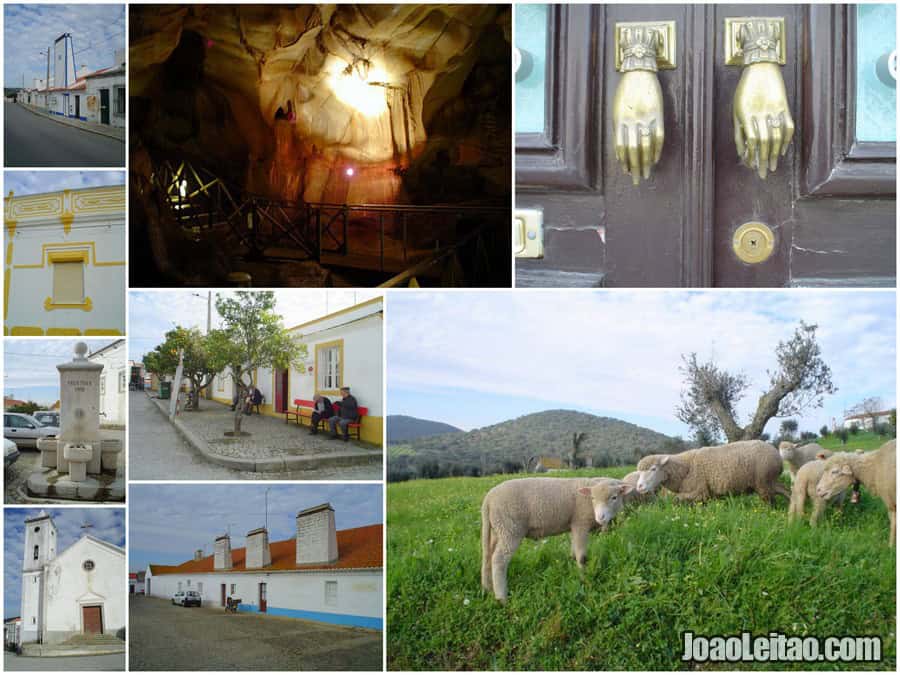
The cave of Escoural was discovered near the village of Santiago de Escoural in 1963, where archaeologists found traces of human occupation dating back to the Middle Paleolithic.
The bones of wild boars, deer, and horses found onsite cast a light on that settlement’s hunting habits. They also found a rock used as a shrine with engravings depicting animals that dated back to the Upper Paleolithic period.
Research also shows that the cave was used as a burial ground during the Neolithic period. Nowadays to visit the cave, you must book a tour in advance with the Centro Interpretativo do Escoural (Escoural Interpretative Center) at the neighboring village. Between 2009 and 2011 the cave was improved with walkways and lighting.
9. Graça do Divor
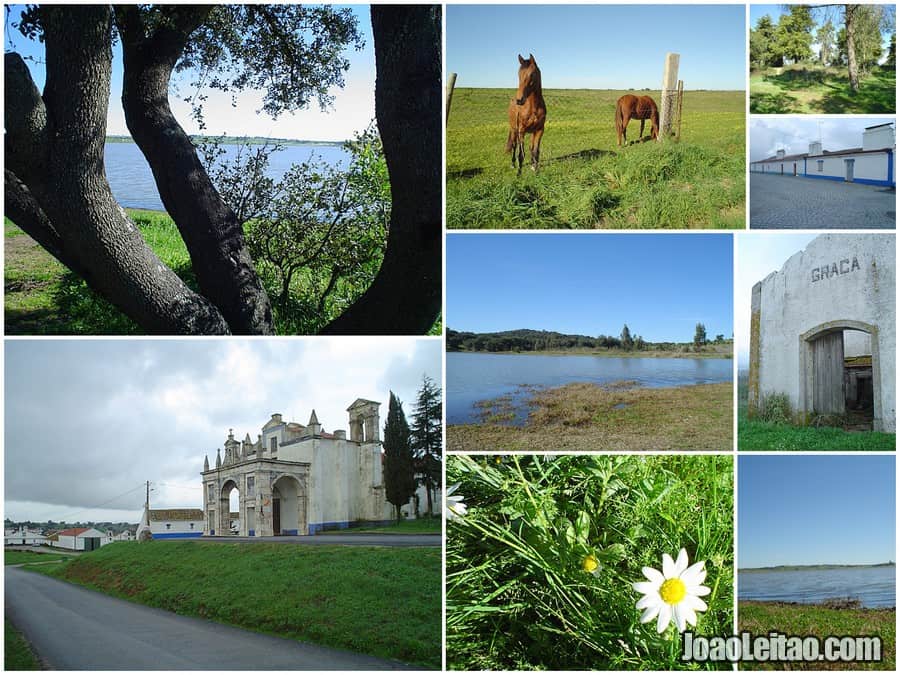
The name dates back to the Ancient Romans that called this place the “Campo Divorum”, which means Place of the Gods.
The village is a typical one, with an aging population and almost deserted, but it’s also picturesque with whitewashed houses decorated with blue baseboards.
The church Igreja Paroquial de Nossa Senhora da Graça do Divor is probably the only piece of architectural heritage worth visiting, built originally in the 16th century but with alterations made after that.
Nearby you can visit the old train station, pre-historical traces (menhirs and dolmens), medieval buildings (Morgado da Oliveira, Solar da Sempre Noiva, Ermida de Santa Catarina, Fonte do Abade), Roman buildings (Vila da Herdade da Azinheira), and ancient fountains (Fonte do Pomar de Divor e Nascentes da Água de Prata).
10. Igreijinha
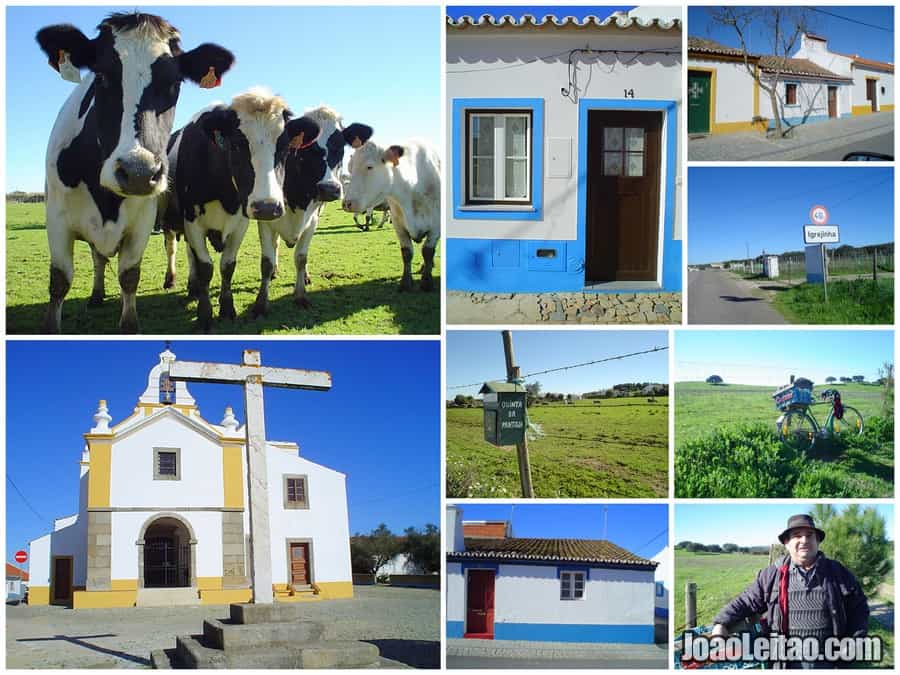
The village of Igreijinha is the headquarters of the parish with the same name and it’s one of the smallest villages in the district with 922 people.
It’s a charming village with the typical church and the whitewashed houses decorated with bright colored baseboards.
When visiting Igreijinha, look for the two ancient fountains Fonte Pública, built by local citizen J. J. Franco for the community, and the Tanque do Leão (Lion’s Tank), the traditional gathering point for Igreijinha locals to socialize.
As you enter the village, you’ll notice the old tomato processing factory called “O Divor.” It’s now abandoned, but it was once the village’s primary source of income.
11. Mitra
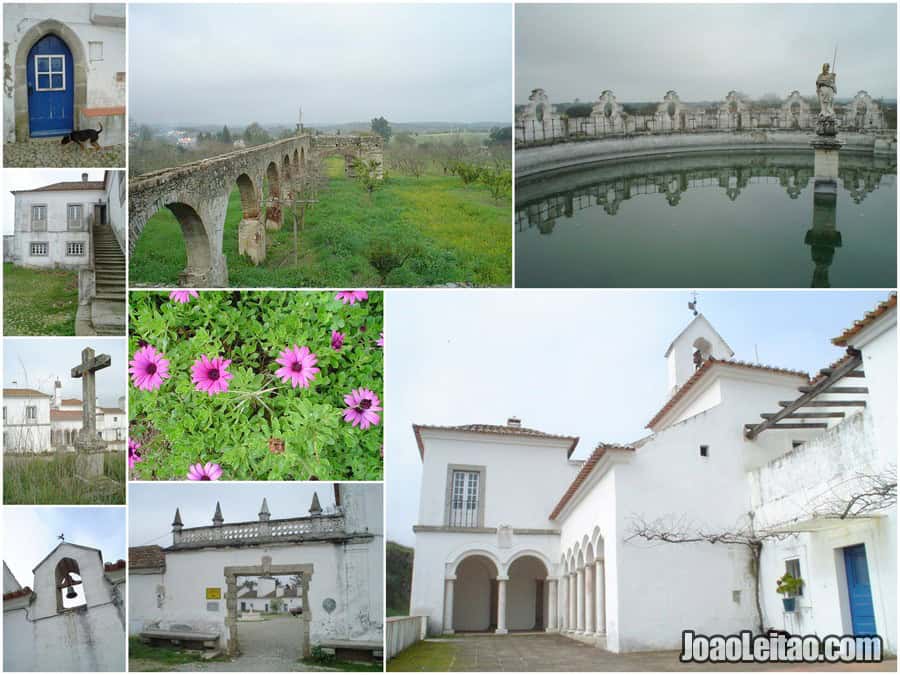
Herdade da Mitra is the estate that replaced Quinta do Paço de Valverde, a place with a long History that begins in the 16th century when it was created by the diocese as a resting place for the most prominent figures of the clergy.
There are some buildings left from the Episcopal Palace built originally in the same place. In the mid-16th century, Cardinal Henrique (who also founded the University of Évora) ordered the construction of the convent of Bom Jesus do Valverde.
When the religious orders were disabled in 1834, the government took over the property and from 1921 onward the place has been used as an educational institution.
It started as the Évora Agricultural Practice School (Escola Prática de Agricultura de Évora) and in 1973 it became a part of the University of Évora.
Today it houses the University’s departments of Rural Engineering, Fitotechnics, Veterinarian School, and Zootechnics.
12. Portel
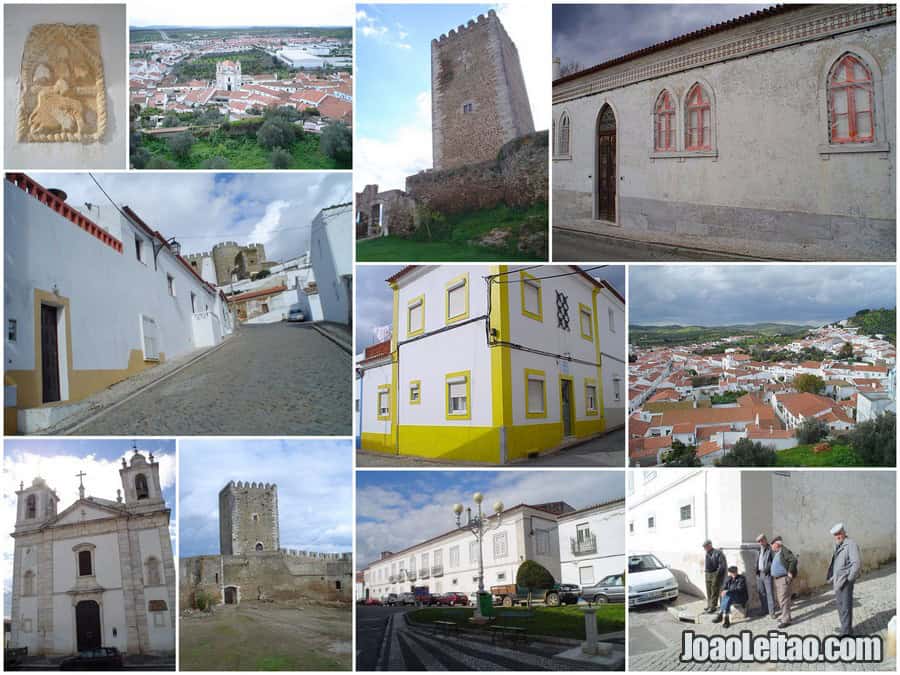
Portel is a gorgeous town and the council’s headquarters, within easy reach close to one of the main roads that connect Beja to Évora. The castle at the top of the town is probably its most famous site.
It was built around 1262 by King Afonso III and has a great view over Portel and the Alentejo’s plains. Not far from there, in the outskirts of town, you can visit the ruins of a must-see ancient chapel. To visit Alentejo is to discover such off the beaten path destinations. How exciting is that!
The church Igreja Matriz de Portel was built in the first quarter of the 16th century and the town grew around it. Other must-see religious buildings in Portel include the 1630 church Igreja da Misericórdia built on the site of an old chapel.
The Paços do Concelho (Town Hall) was built in 1646 and fully restored in 1876. Other must-visit places include the Parque da Matriz, the Cerca de São Paulo, and the Museu da Freguesia (the local museum).
But regardless of all the sites I mentioned, Portel is a picturesque town that appeals to all tourists.
13. Santa Justa
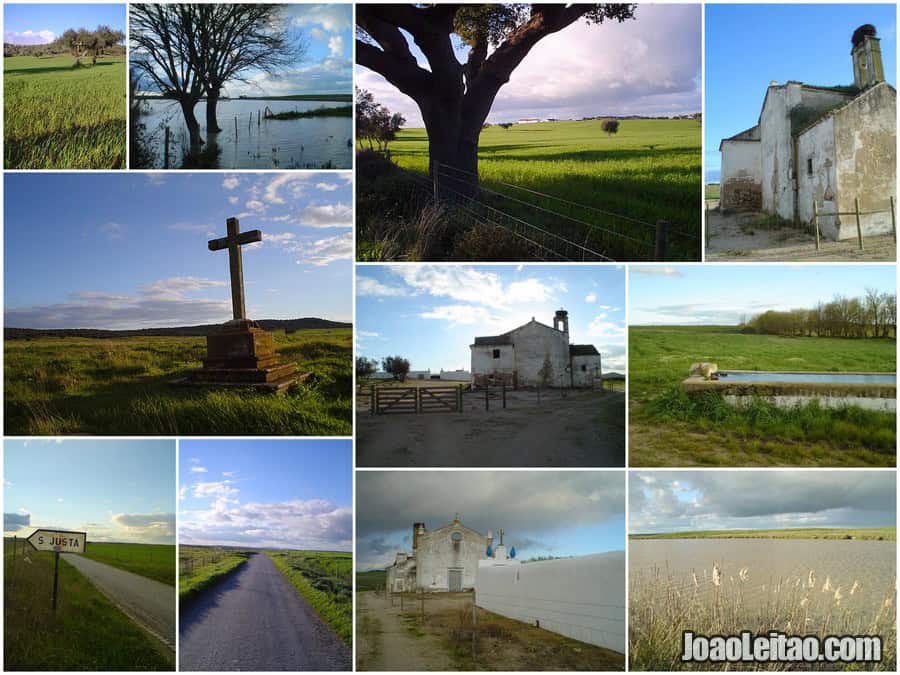
Santa Justa is a few kilometers north of Évora, between highway A6 and the Estrada Nacional N4, in-between Arraiolos and Vimieiro.
The parish headquarters is the village of Vale Pereiro. Santa Justa is the quintessential Alentejo community. Quiet, with few people, and with streets flanked by one-floor whitewashed houses.
It’s an isolated village that you only visit if you have to. Must-see sites include an old 18th-century church, now in ruins, the village cemetery, which is open to everyone.
Also don’t miss the typically Portuguese elementary school, now abandoned, and a fountain where locals went to cool off and get fresh water in the old days.
14. Santa Sofia
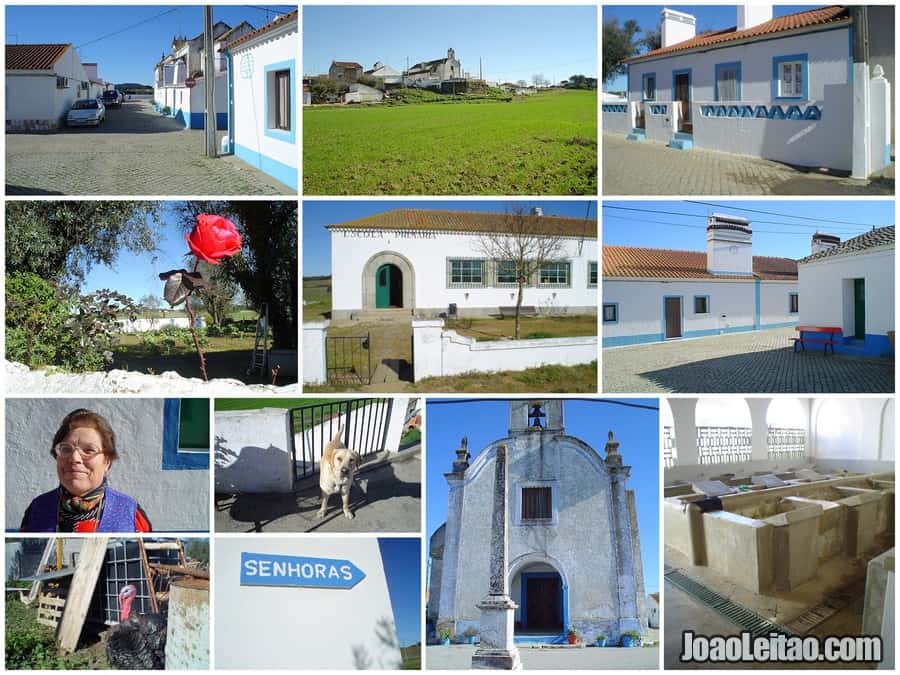
The small village of Santa Sofia is near Montemor-o-Novo, right next to highway A6. It was once the parish headquarters and historical records show it had a total of 79 houses in 1759.
One of the main points of interest is the church, referenced for the first time in a 1424 document. The renovation made later, in the 17th century, added the Baroque style details that last until today.
In addition to mingling with the friendly people of Santa Sofia, you can wander the few streets of Santa Sofia, see the well-preserved old elementary school, and the old public washer.
15. São Sebastião da Giesteira
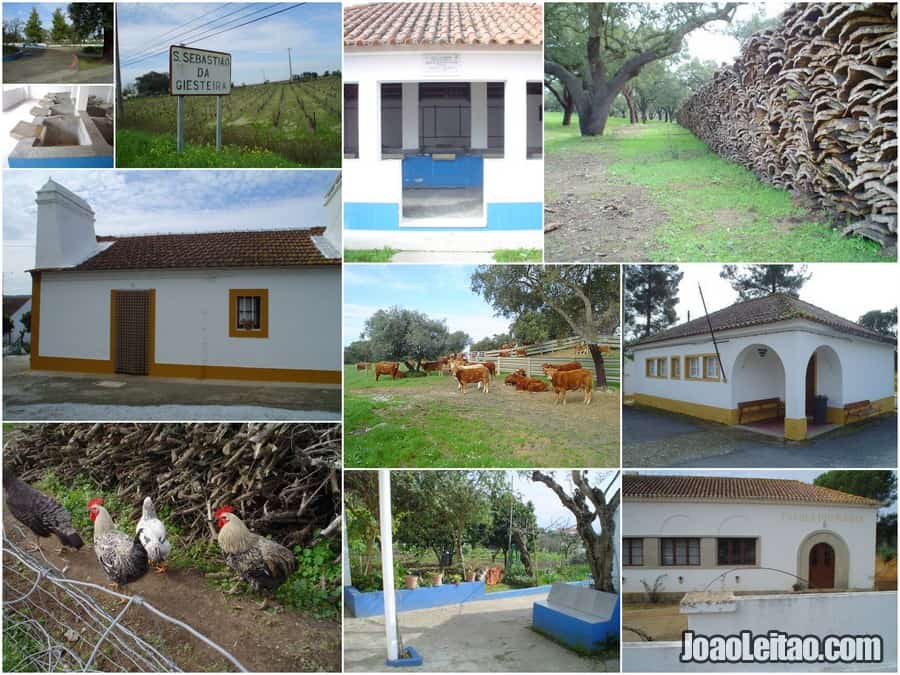
The village of São Sebastião da Giesteira is a quiet Alentejo town with about 700 people. It’s located west of Évora, almost halfway between the capital and Montemor-o-Novo.
At first sight, it’s a village without much to see. In addition to the public washer and the old elementary school. This ss the perfect place to observe the quiet and tranquil lifestyle of the Alentejo countryside.
However, nearby you can visit the Anta de Pinheiro do Carmo, a megalithic monument found at the end of the 19th century with one chamber and seven mainstays. All the elements of this dolmen are in their original positions.
16. São Bartolomeu do Outeiro
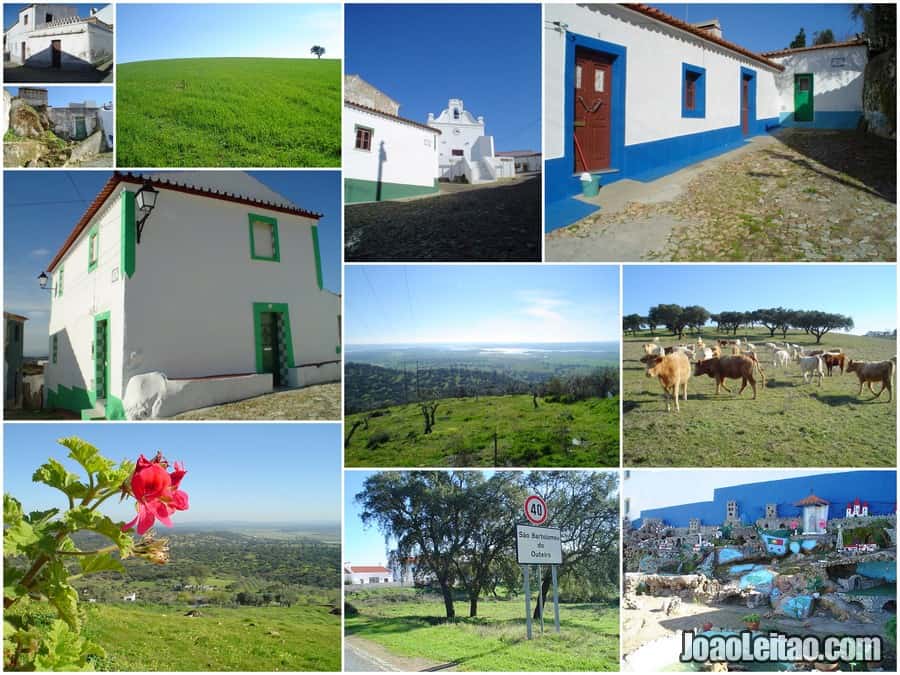
In the past, this village was known as Oriola de Cima because it was part of the old Vila da Oriola until 1836. It’s near Viana do Alentejo and the district border with Beja.
You have to visit Alentejo, and you have to visit small places like São Bartolomeu do Outeiro. At the village, there’s a beautiful church that dates back to the Middle Ages, with a marble statue of Saint Bartholomew (São Bartolomeu), the village’s patron saint, who is depicted with a Devil attached.
It’s near the highest point of the mountain in Portel and at this village, you can visit the viewpoint with a fire monitoring station from where you have an impressive view.
The “small village” (“aldeia dos pequeninos”) is a small-scale model of the village that you also must visit.
17. São Brissos
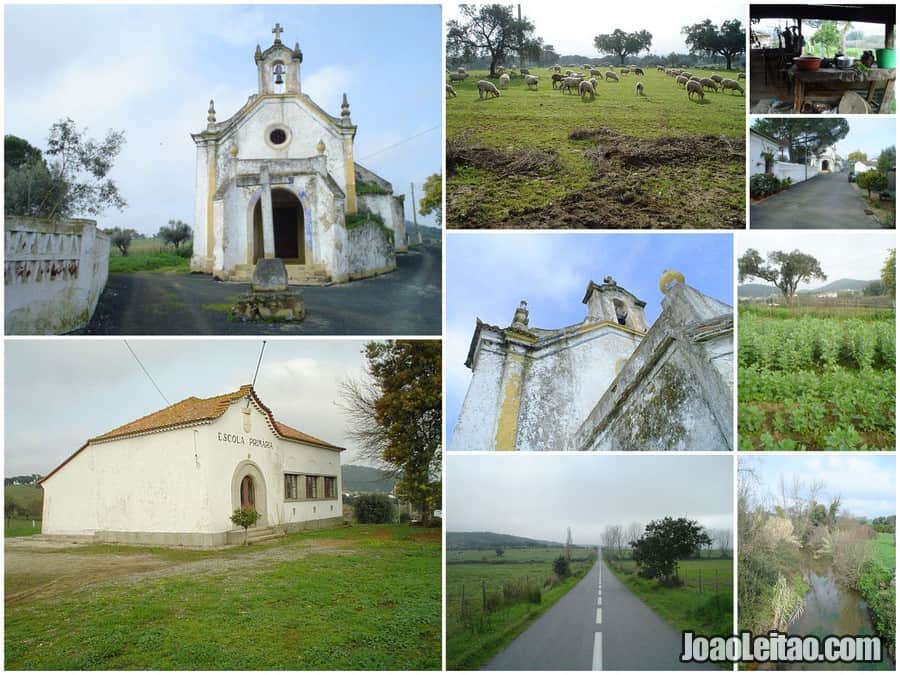
São Brissos, in the district of Évora, Montemor-o-Novo county, shouldn’t be confused with the other best-known São Brissos near Beja.
Both places were named after a Portuguese saint who was the second bishop of Évora, killed by the Romans in 312.
There’s a spectacular chapel (Nossa Senhora do Livramento) near the village, built in the 17th century and incorporating a pre-historical dolmen. It’s an interesting fusion of the building with a piece that dates back to 4000 to 3000 years BC.
At the village, visit the 16th-century church built in a rustic style with regional décor and a few touches of Manueline style. There’s also an almost abandoned old elementary school you can visit.
18. São Matias
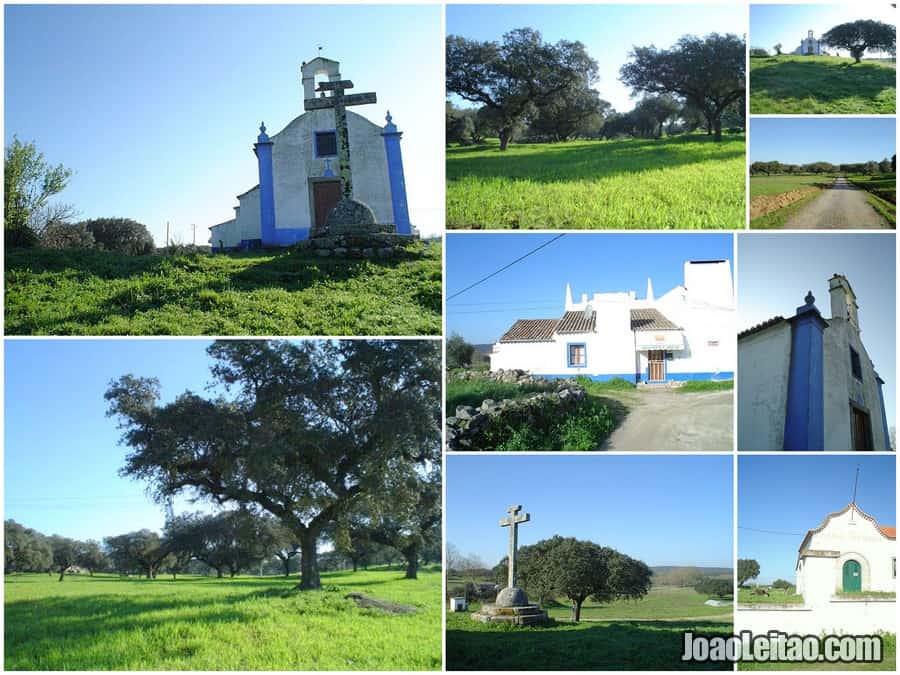
São Matias is a small village near Évora. It was founded in the 16th century and was once the headquarters of the parish, which was dismissed at the beginning of the 20th century.
Like many other places in the area, it’s a rural village with few people. It has a church, which was severely damaged in 1808 when it was attacked by the French troops led by general Louis Henri Loison.
Also interesting to visit are the closed elementary school, and very typical whitewashed houses decorated with blue baseboards.
19. São Pedro
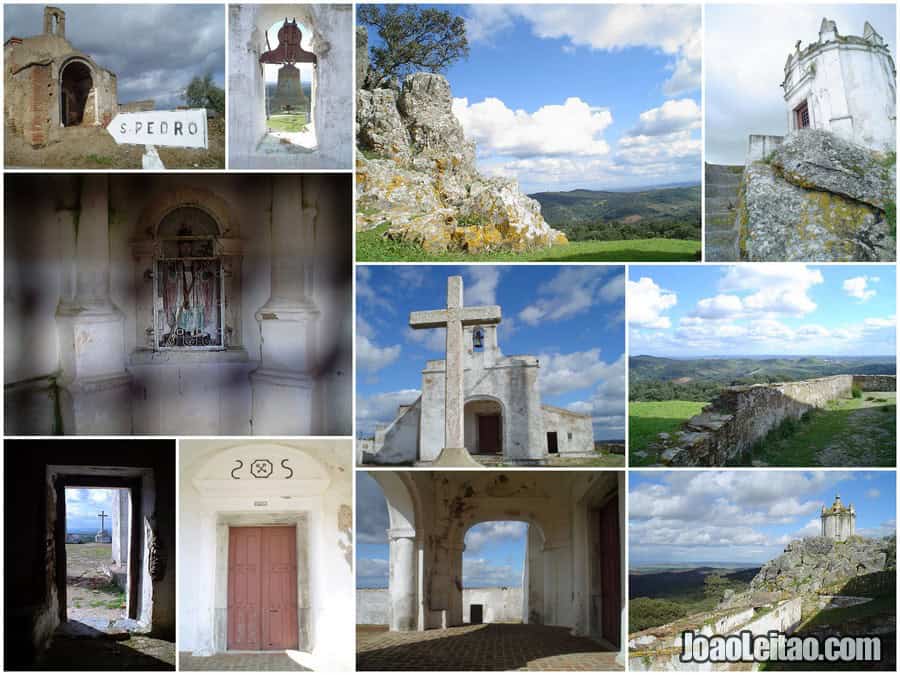
Near Portel, about 4 km away, there’s a small chapel built on top of the hill called São Pedro (St. Peter’s).
The temple we see now dates back to the first quarter of the 17th century, but there used to be another one at the same spot, 200 years older. It’s a must-visit for the magnificent views.
At the end of the day, you can enjoy the quietness and take some excellent photos of the sunset.
20. Terena
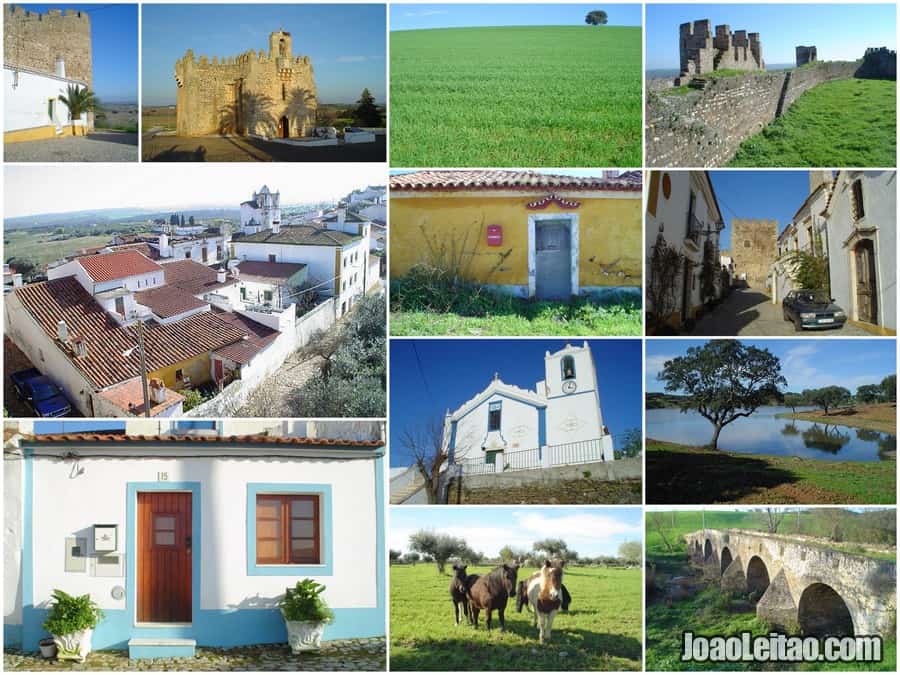
Terena is one of the places that it’s farthest from the district’s capital city Évora, 79 km away.
This town, also known as São Pedro or São Pedro de Terena, was founded on a high place in 1262 and built around the castle that was strategically placed there.
There is a lot to see in this quiet town. The church Igreja Matriz (also known as São Pedro church) built before the 14th century, the church Igreja da Misericórdia that dates back to the 16th century, the shrine Santuário de Nossa Senhora da Boa Nova.
Also not to miss are the chapel Capela de Santo António built in the mid-17th century, the churches of São Sebastião and Nossa Senhora da Conceição da Fonte Santa, and the ruins of the old chapel of Santa Clara.
In addition to the religious heritage sites, you can also visit the 16th-century pillory, the Clock Tower, the old bridge, the Roman settlement of Endovelicus, and the ruins of the Castro de Castelo Velho.
21. Vale do Pereiro
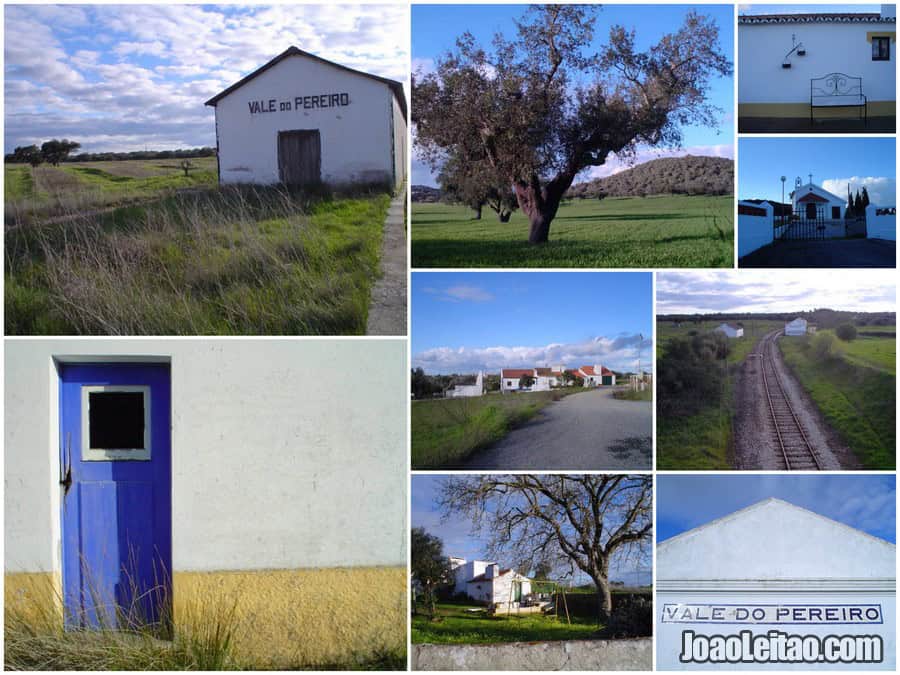
Vale do Pereiro is now a remote village a few kilometers north of Évora and the headquarters of the parish with the same name.
The name “pereiro” (pear tree in Portuguese) seems to come from the many wild pear trees in the area. Its golden age was during the Arab occupation when the village had a working copper mine.
There is an old, ruined house called “casa da moura” (the Moorish house) that’s a reference to those days. In the 17th century, the mine reopened for a short time and then again just 70 years ago, as part of the Aljustrel mine complex, when they found utensils used by the old mineworkers.
At the village, you can visit the churches of Santa Justa (17th century) and São Sebastião, the Fonte de Santa Justa (a fountain believed to be linked to some local miracles), and the old train station.
22. Viana do Alentejo
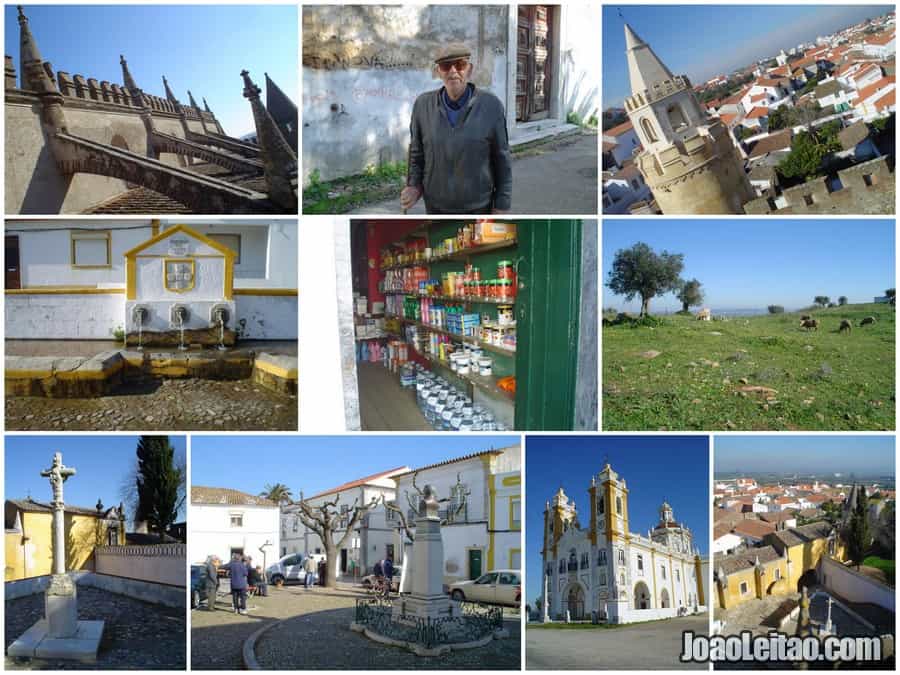
With 3,000 people, this is one of the best-known towns in Alentejo. It was given a Royal Charter Letter in 1313 by King Dinis and the construction of the castle began immediately.
The castle was improved and strengthened for a while and was once the temporary residence of King João II. But from the 16th century onward, the fortress was neglected until it became just a trace of the past.
The main church is unusually inside the castle. The temple was built in the 16th century, designed by Diogo de Arruda in Manueline style with a beautiful marble entrance.
The most impressive building in the town is, however, outside of town: the shrine Santuário de Nossa Senhora de Aires built in 1760 in Rococo style.
It’s known for the festivities and fairs that have been taking place there since the 16th century when it had a small chapel and an inn for travelers.
Don’t miss visiting the Casa dos Milagres (House of Miracles), the old fraternity hall with hundreds of religious vows collected over the centuries.


